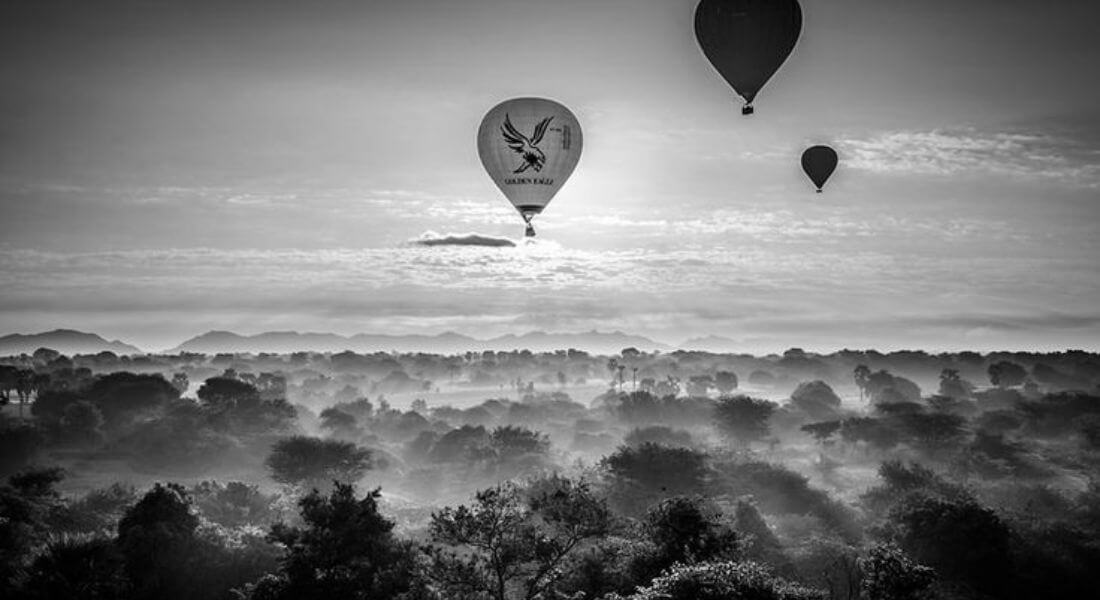General
Various Models Of Communication In Nursing
Communication in nursing refers to the exchange of information, ideas, and emotions between healthcare professionals and patients, their families, and other healthcare team members. Effective communication is essential for building therapeutic relationships, providing quality healthcare, and promoting positive health outcomes. According to a nursing assignment expert, communication can take many forms, including verbal and nonverbal communication, written communication, and the use of technology. Nurses must be skilled in these areas to ensure they can effectively communicate with patients, understand their needs and concerns, and provide appropriate care.
Communication is an essential aspect of nursing practice critical to promoting effective healthcare delivery. As healthcare providers, nurses must communicate effectively with patients, their families, and other healthcare professionals to provide optimal care. Effective communication helps nurses establish a rapport with patients, which is essential in building trust and fostering therapeutic relationships. Through effective communication, nurses can understand patients’ needs, fears, and concerns and provide them with the necessary support and reassurance.
Peplau’s model
Peplau’s model, also known as the Interpersonal Relations Theory, is a nursing theory developed by Hildegard Peplau in the 1950s. The theory emphasizes the importance of the nurse-patient relationship in promoting and maintaining health and the role of nurses in facilitating the development of therapeutic relationships.
According to Peplau’s model, nursing is an interaction process between the nurse and the patient. The model consists of four interdependent stages of the nurse-patient relationship: introduction, recognition, utilization, and conclusion. The orientation phase involves the nurse and patient getting to know each other and establishing trust.
The nurse provides emotional support, active listening, and empathy to help the patient feel comfortable and understood. The identification phase involves the patient expressing their needs and the nurse identifying and clarifying them. The nurse provides education, resources, and support to help the patient understand their condition and develop coping strategies.
The exploitation phase involves the patient using the resources the nurse provides to achieve their goals. The nurse helps patients achieve their goals and provides ongoing support and encouragement. The resolution phase involves the patient achieving their goals and ending the therapeutic relationship. The nurse helps the patient reflect on their experience and provides closure to the relationship.
Peplau’s model has been widely used in nursing practice, education, and research. It provides a framework for understanding the importance of the nurse-patient relationship in promoting and maintaining health. It emphasizes the role of nurses in facilitating the development of therapeutic relationships. Nurses who use Peplau’s model can help patients feel heard, understood, and empowered, enabling them to achieve their full potential.
“Nurses Save Their Patients In The Most Important Capacities”
– Lois Capps
Humanistic Model
The humanistic communication model in nursing emphasizes building therapeutic relationships based on trust, empathy, and mutual respect. The model is based on the notion that nurses need to perceive patients as distinct individuals with their own viewpoints, encounters, and emotions to achieve effective communication.
The humanistic model urges nurses to establish a safe and supportive atmosphere that fosters patients’ comfort in sharing their thoughts and feelings. This involves active listening, showing empathy, and responding with compassion and kindness. The humanistic model also emphasizes the importance of nonverbal communication, such as body language and facial expressions. Nurses must be aware of their nonverbal cues and be able to interpret the nonverbal cues of their patients to understand their needs and emotions better.
The humanistic communication model in nursing emphasizes treating patients with unique needs and concerns. It promotes using empathetic communication techniques to help patients feel heard, understood, and valued. Nurses can improve patient satisfaction and promote positive health outcomes by building strong therapeutic relationships with patients.
Berlo’s Model
David Berlo developed Berlo’s model of communication, also known as the SMCR model, in 1960. The model describes the fundamental communication elements and offers a structure for comprehending how messages transmit and receive. The SMCR model consists of four components: source, message, channel, and receiver.
The source is the sender or communicator of the message. The message is the information being communicated. The channel is the method or medium used to transmit the message, such as speech, writing, or electronic media. The receiver refers to the individual who receives the message. Berlo’s model also considers the influence of various factors on the communication process, including the communicator, the message, the audience, and the context.
The communicator is the person or entity sending the message. Their credibility, expertise, and level of understanding can influence the communication’s effectiveness. The conveyed information, which can be verbal, nonverbal, or symbolic, communicates the message. The message recipient, known as the audience, can receive the message differently based on their comprehension level, attitude, and perception.. Finally, the context includes the environment, culture, and other factors that can affect the communication process.
Healthcare professionals and patients have widely used Berlo’s model in nursing practice and education to facilitate efficient communication. Nurses who use the model can ensure that they send clear and concise messages tailored to their patient’s needs and understanding while also considering the broader context of the communication.
Orem’s model
Orem’s model, also known as the Self-Care Deficit Theory of Nursing, is a nursing theory developed by Dorothea Orem in the 1950s. The theory emphasizes the importance of self-care in promoting and maintaining health and the role of nurses in supporting and facilitating self-care behaviours in patients.
According to Orem’s model, individuals naturally care for themselves and their health. However, when individuals’ ability to care for themselves is compromised, they experience a self-care deficit. In such situations, nurses can help by providing education, resources, and support to enable patients to care for themselves and overcome their self-care deficit.
Orem’s model is based on three interrelated concepts: self-care, self-care deficit, and the nursing system. Self-care refers to individuals’ activities to maintain their health and well-being. A self-care deficit occurs when an individual cannot perform self-care activities due to illness, injury, or other factors. The nursing system is the set of interventions and support nurses provide to help patients overcome their self-care deficits.
The nursing process in Orem’s model consists of three stages: assessment, diagnosis, and intervention. During the assessment stage, the nurse evaluates the patient’s self-care abilities and identifies any deficits. In the diagnosis stage, the nurse formulates a nursing diagnosis based on the patient’s self-care deficits. In the intervention stage, the nurse develops a plan of care that includes education, resources, and support to help the patient overcome their self-care deficit.
It provides a framework for understanding the role of nurses in promoting and maintaining health and emphasizes the importance of patient-centred care and empowerment. Nurses who use Orem’s model can help patients take an active role in their health and well-being and enable them to achieve their full potential.
Why Are Different Models of Communication Required in Nursing?
Effective communication is crucial in nursing, promoting patient safety, satisfaction, and positive outcomes. Each model provides nurses a unique framework and strategies for communicating effectively with patients and other healthcare professionals.
Nurses require different communication models as they offer them various frameworks and techniques to communicate efficiently with patients and other healthcare professionals. Effective communication is essential in nursing, promoting patient safety, satisfaction, and positive outcomes.
Each communication model has its unique features and strengths, which can be used to address different communication needs and challenges in nursing. By using different communication models, nurses can tailor their communication strategies to their patients’ and colleagues’ specific needs and circumstances. This can help improve patient outcomes, build positive relationships with colleagues, and promote effective collaboration and teamwork in healthcare settings. It is advised by nursing assignment help experts that using different communication models is essential in nursing to promote effective communication and provide high-quality patient care.
General
Animated Mississippian Maize Celebrates Native Farming

Farming has always played a significant role in Native American culture. Animated Mississippian Maize captures this rich history in a visually engaging way. It showcases how ancient communities relied on maize for survival and trade. This animation connects the past to the present, helping viewers appreciate indigenous agricultural expertise. Simple storytelling and digital tools bring forgotten traditions back to life. Let’s explore how this animation sheds light on Native farming.
Key Takeaways
- Animated Mississippian Maize preserves indigenous farming traditions.
- It highlights the deep connection between Native people and agriculture.
- The animation brings history to life for modern audiences.
- Understanding Mississippian maize farming enriches historical knowledge.
- Digital tools help spread awareness of traditional farming techniques.
The Importance of Maize
Maize was more than just a crop—it was a lifeline. Indigenous communities used maize for food, trade, and ceremonies. Animated Mississippian Maize highlights how farming techniques evolved, ensuring sustainability.
“Maize farming shaped the economy and culture of Mississippian societies.”
By studying these methods, we gain insight into efficient and eco-friendly agriculture. Traditional planting strategies, like the Three Sisters method, remain valuable today.

Farming Techniques in Animation
Animation breathes life into historical knowledge. Animated Mississippian Maize uses visuals to demonstrate planting, harvesting, and storage. It highlights how indigenous farmers cultivated maize alongside beans and squash. These techniques improved soil fertility and ensured food security.
“Traditional farming methods emphasize sustainability and resourcefulness.”
Educators can make history more engaging by incorporating animation. This approach helps students and researchers understand the wisdom behind early agricultural practices.
Cultural Significance of Maize
Maize wasn’t just food; it was part of rituals and storytelling. Animated Mississippian Maize explores how indigenous people saw maize as a sacred gift. It played a role in ceremonies, myths, and social structures.
Key cultural aspects include:
- Spiritual Meaning: Many tribes viewed maize as a symbol of life.
- Community Bonding: Farming strengthened social connections.
- Oral Traditions: Stories about maize passed knowledge to future generations.
Understanding these traditions helps preserve indigenous heritage and respect their contributions to agriculture.
How Animation Educates Viewers
Digital tools make learning accessible. Animated Mississippian Maize simplifies complex historical concepts. It helps students visualize how farming shapes communities.
Benefits of Animation in Education
- Engages young learners with colorful storytelling.
- Provides a visual timeline of agricultural development.
- Connects history with modern sustainability practices.
With animation, Native farming traditions reach a broader audience. This ensures the preservation of cultural knowledge.
Modern Lessons from Ancient Farming
Traditional maize farming techniques still hold value today. Animated Mississippian Maize teaches modern farmers about soil health, crop rotation, and organic methods. These ancient practices align with sustainable farming goals.
Key Lessons
- Companion Planting: Boosts crop growth naturally.
- Soil Conservation: Prevents erosion and improves fertility.
- Natural Pest Control: Reduces the need for chemicals.
By studying indigenous methods, we can develop more eco-friendly farming systems.
Conclusion
Animated Mississippian Maize is more than just a visual story; it is a bridge between past and present. It honors Native farming traditions and educates audiences about sustainable agriculture. As we explore the wisdom of ancient farmers, we gain valuable insights into modern farming and cultural appreciation.
FAQs
1. Why is maize important in Native history?
Maize was a staple crop that supported entire communities. It played a crucial role in food, trade, and cultural traditions.
2. How does animation help preserve history?
Animation makes complex topics engaging and accessible. It visually demonstrates traditional farming techniques.
3. What farming methods did Mississippian cultures use?
They used techniques like the Three Sisters planting, crop rotation, and organic soil enrichment.
4. Can we apply these farming methods today?
Traditional methods promote sustainability, soil health, and efficient crop production.
5. Where can I watch Animated Mississippian Maize?
Educational resources and animations are found in museums, history websites, and Indigenous organizations.
General
Severe Duty Brush Cutter 06488 The Best for Vegetation

Managing thick vegetation and thorny brush requires a powerful tool. The Severe Duty Brush Cutter 06488 is designed to handle dense overgrowth, making land clearing easier and more efficient. Whether dealing with overgrown fields or rugged landscapes, this brush cutter ensures smooth operation. Its durable construction and sharp blades allow users to tackle challenging jobs effortlessly. This guide explores its features, benefits, and why it’s the best choice for heavy-duty land clearing.
Key Takeaways
- Severe Duty Brush Cutter 06488 is built for heavy-duty vegetation clearing.
- It provides durability, efficiency, and high performance for demanding jobs.
- It is ideal for farmers, landscapers, and landowners needing a reliable cutting tool.
- It features sturdy blades, a powerful motor, and ease of use.
- It is an excellent investment for maintaining large properties.
What is Severe Duty Brush Cutter 06488?
The Severe Duty Brush Cutter 06488 is a high-powered cutting tool for removing thick vegetation, shrubs, and small trees. Built with industrial-grade materials, it provides long-lasting performance in challenging environments.
Features of Severe Duty Brush Cutter 06488
- Heavy-duty steel frame for maximum durability.
- Sharp, high-performance blades for cutting through dense vegetation.
- Powerful motor that ensures efficient cutting.
- Easy attachment system for seamless connection to machinery.
- Safety features to protect the user during operation.

Benefits of Using Severe Duty Brush Cutter 06488
High Cutting Efficiency
The Severe Duty Brush Cutter 06488 is designed for maximum cutting performance. Its sharp blades and high-torque motor allow users to cut through thick brushes without difficulty.
“A powerful tool like this saves time and effort, making land clearing a breeze.”
Built for Tough Conditions
Unlike standard brush cutters, this model is specifically built for harsh conditions. It delivers reliable results on rocky terrains, dense fields, or wet landscapes.
Easy to Operate
This brush cutter has user-friendly controls, making it simple for professionals and beginners.
Long-Lasting Durability
With its reinforced steel frame and high-quality materials, this brush cutter ensures years of performance with minimal maintenance.
How to Use Severe Duty Brush Cutter 06488
Using the Severe Duty Brush Cutter 06488 correctly is essential for safety and efficiency. Follow these steps:
Setup and Safety Check
- Inspect the brush cutter for any damages or loose parts.
- Ensure all safety gear (gloves, goggles, boots) is worn.
- Attach it securely to the machinery.
Operating the Brush Cutter
- Start the machine and gradually increase speed.
- Move-in controlled smooth motions to prevent damage.
- Avoid rocky areas that may damage the blades.
“Proper operation ensures the longevity of your brush cutter and keeps you safe.”
Maintenance Tips
- Clean blades after every use to prevent rust.
- Oil moving parts regularly to reduce friction.
- Store in a dry area to maintain durability.
Why Choose Severe Duty Brush Cutter 06488?
Superior Performance
Its high-power motor and efficient design make it the best tool for clearing thick vegetation.

Versatility
Suitable for farms, landscapes, construction sites, and forestry, making it a multi-purpose tool.
Cost-Effective Investment
While it may seem like a significant investment, its long lifespan and efficiency save money in the long run.
“Investing in a high-quality brush cutter means fewer repairs and replacements.”
Conclusion
The Severe Duty Brush Cutter 06488 is an essential tool for those needing a robust, durable, and efficient solution for land clearing. Its muscular build, high performance, and easy handling make it one of the best brush cutters available. This brush cutter is the perfect choice if you need to maintain a large property with thick vegetation.
FAQs
1. How thick of vegetation can Severe Duty Brush Cutter 06488 handle?
It can easily cut through small trees, thick shrubs, and dense brush.
2. Is Severe Duty Brush Cutter 06488 suitable for beginners?
Yes, it features easy-to-use controls and safety features, making it accessible to all users.
3. How often should I maintain the brush cutter?
Regular blade cleaning, lubrication, and inspections will keep it in top condition.
4. Can it be used in wet conditions?
Yes, but avoid highly muddy areas to prevent clogging.
5. Where can I buy Severe Duty Brush Cutter 06488?
It is available at major hardware stores and online retailers specializing in heavy-duty equipment.
General
Why Is WBN Only Black and White Still Popular

Key Takeaways
- Why is WBN only black and white? The artistic choice adds a classic and nostalgic feel.
- Black and white visuals create a unique cinematic impact.
- The format pays homage to classic films and storytelling.
- It enhances shadows, contrast, and atmosphere.
- Many fans love the timeless aesthetic.
Introduction
Black-and-white visuals have a charm that never fades. Many wonder why is wbn only black and white despite modern technology. The reason goes beyond nostalgia. This classic style enhances storytelling, mood, and emotion. The absence of color lets viewers focus on the details that matter. From classic films to modern projects, black-and-white still holds power. It captivates audiences in ways color sometimes cannot. But what makes it so popular even today? Let’s explore this in depth.
The Nostalgic Appeal
People love revisiting the past through black-and-white visuals. This style reminds viewers of early cinema, creating a sense of nostalgia. When WBN chose this format, it instantly resonated with classic film lovers.

Older generations who grew up watching black-and-white films feel an immediate connection to the style. Meanwhile, younger viewers appreciate its artistic and aesthetic appeal. Many modern filmmakers deliberately choose black-and-white to evoke certain emotions that color films often struggle to achieve. The simplicity of this format allows audiences to engage with the story in a more meaningful way.
“Black and white images carry a depth of emotion that color sometimes overshadows.” – Film Critic.
Enhancing Mood and Atmosphere
One key reason why is wbn only black and white is its ability to create an immersive atmosphere. The lack of color adds a layer of mystery and drama, making every scene visually compelling.
Shadows and lighting become more pronounced in black and white, helping filmmakers play with contrast and depth. This technique is beneficial in genres like horror and noir, where shadows convey hidden meanings and suspense. The stark contrasts enhance emotions, making every expression, movement, and setting more impactful.
By removing color, filmmakers ensure that viewers concentrate on the essence of each frame. Instead of being distracted by bright visuals, the audience focuses on character expressions, story arcs, and cinematic elements. This creates a deeper connection to the film and intensifies the viewing experience.
A Tribute to Classic Cinema
Using black and white is not just a creative choice; it’s also a tribute. Many iconic films were shot in this format, making it synonymous with Hollywood’s golden era. WBN embraces this tradition, keeping the essence of old cinema alive.
Classic films relied on strong storytelling, expressive acting, and striking cinematography—elements that remain relevant today. By adopting this style, WBN aligns itself with the legendary filmmakers of the past. It acknowledges cinema’s roots while offering something fresh for modern audiences.
“In a world of color, black and white stands out.” – Director’s Statement.
The Power of Simplicity
Simplicity often has a stronger impact than complexity. why is wbn only black and white because it strips away distractions and focuses on raw emotions.
Without the element of color, the human brain interprets visuals differently. Expressions appear more intense, environments feel more immersive, and storytelling becomes the focal point. Many great directors choose black and white to ensure their films remain timeless rather than tied to any particular era’s color trends.
Films shot in black and white also age better. While color palettes have become popular over the years, black and white remain consistent in their impact. This timeless appeal is why black and white remains an enduring choice for filmmakers and audiences alike.
Why It Continues to Resonate
Even in an era of high-definition and vibrant colors, black-and-white remains popular. Why? Because it offers something unique.
Digital enhancements, CGI effects, and oversaturated visuals often overwhelm modern audiences. In contrast, black-and-white provides a refreshing break from sensory overload. The format offers a minimalist aesthetic that feels deliberate, artistic, and emotionally powerful.
Additionally, streaming services and film festivals have reintroduced black-and-white films to newer generations. Independent filmmakers continue to experiment with the style, proving that it is far from outdated. As long as storytelling remains a priority, black-and-white will continue to have a place in cinema.
Conclusion
WBN, only in black and white, is still popular today for a simple reason—it works. It enhances storytelling, pays tribute to history, and offers a visually striking experience in a world dominated by color; black and white stand out. Whether for nostalgia, artistic impact, or mood enhancement, this classic style remains beloved.
Black and white filmmaking proves that strong narratives and compelling visuals do not need the crutch of color. It’s a testament to how simplicity can leave a lasting impact. Audiences will continue to embrace this format for its emotional depth, timeless appeal, and ability to transform storytelling into an art form.
FAQs
1. Why is WBN only black and white instead of color?
It enhances storytelling, creates nostalgia, and pays tribute to classic films. The choice is intentional and adds to the cinematic experience.
2. Does black and white improve the viewing experience?
Yes, it enhances contrast, mood, and emotional depth. Viewers focus more on characters and storytelling rather than being distracted by color.
3. Is black and white still used in modern films?
Yes, many directors choose black and white for artistic and storytelling reasons. Independent films, dramas, and experimental cinema often use black and white for their unique impact.
4. Why do people still enjoy black-and-white visuals?
Black-and-white visuals feel nostalgic, timeless, and unique compared to color films. They also emphasize lighting, shadows, and composition in a way that color cannot.
5. Will black and white ever become outdated?
Unlikely! As long as storytelling remains a priority, black and white will continue to have a place in media. Filmmakers will keep using it to create artistic and emotional depth.
-

 Travel6 days ago
Travel6 days ago10 Things to Do in Punta Mita
-

 Business1 month ago
Business1 month agoWhat to Know Before You Start a Business?
-

 Travel2 weeks ago
Travel2 weeks agoBest Things to Do in New York City – Ultimate Travel Guide
-

 Health2 weeks ago
Health2 weeks agoGuide to Buying Testosterone Propionate Safely and Effectively
-

 Real Estate3 days ago
Real Estate3 days agoHow to Be the Best Real Estate Agent Murfreesboro
-

 General3 weeks ago
General3 weeks agoSevere Duty Brush Cutter 06488 The Best for Vegetation
-

 Real Estate3 weeks ago
Real Estate3 weeks agoTop Tips for Real Estate Agents in San Antonio
-

 General2 weeks ago
General2 weeks agoAnimated Mississippian Maize Celebrates Native Farming

